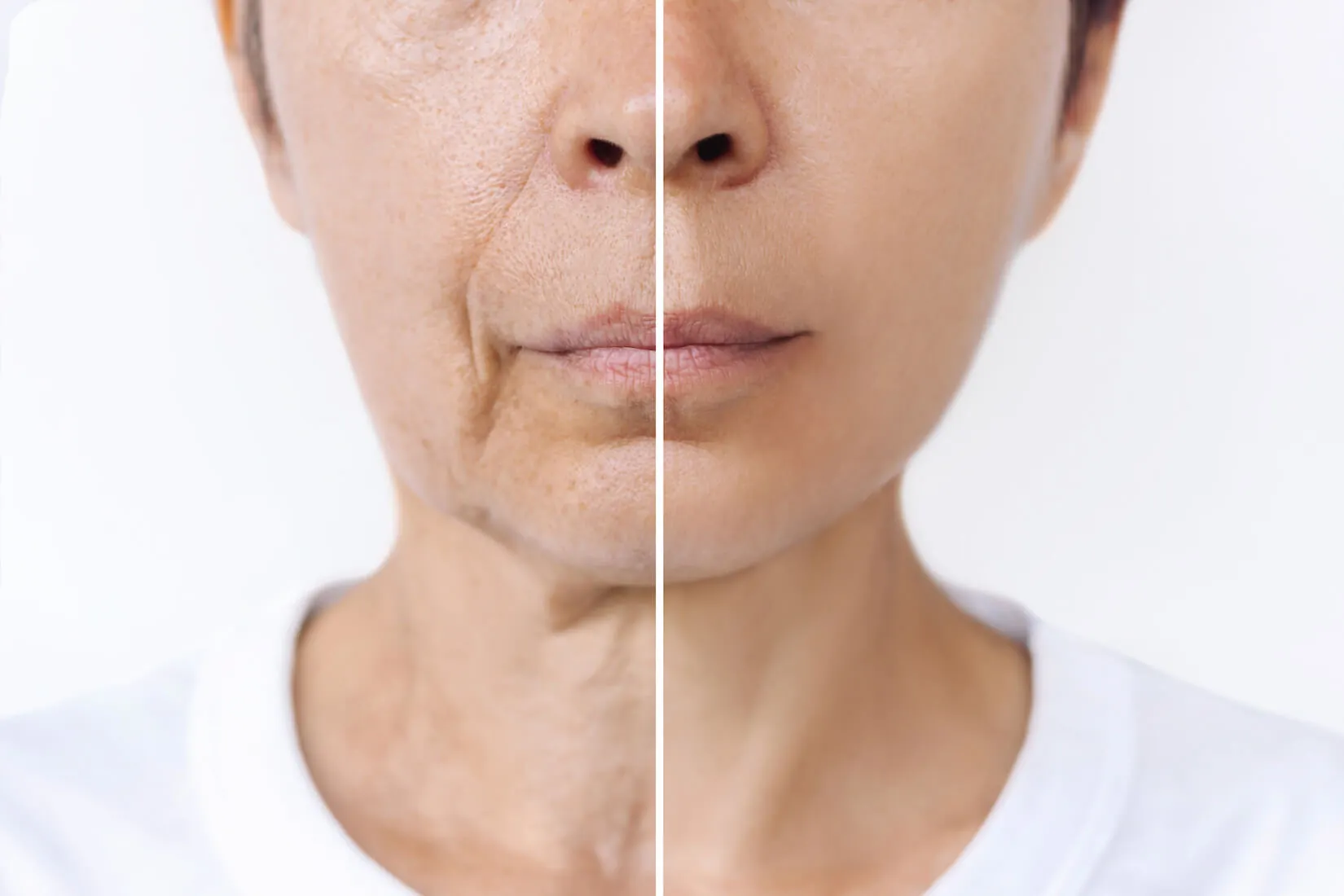As we get older, many of us seek a way to achieve facial rejuvenation to achieve a more youthful appearance. Facelifts remain the most popular cosmetic procedure for achieving this look. However, as medical technology has advanced, so too have our options for facelifts. One of the biggest innovations in facial plastic surgery has been the deep plane facelift, but what sets a deep plane facelift apart from a regular facelift?
In this blog, we’ll explore that difference and highlight why deep-plane facelifts have grown in popularity for their natural-looking and long-lasting results.
What Is a Regular Facelift?
A traditional facelift, also known as a SMAS facelift, primarily focuses on lifting and tightening the skin. This is done by repositioning the superficial musculoaponeurotic system (SMAS) layer, the underlying facial tissue layer, for structural support. Using carefully planned incisions, the surgeon lifts the skin and repositions this SMAS layer for a more youthful contour, after which excess skin is trimmed.
SMAS facelifts are effective for reducing sagging skin, wrinkles, and jowls, providing a noticeable rejuvenation of the lower face and jawline. However, the procedure is not without its limitations. SMAS facelifts can sometimes result in a “pulled” or unnatural look, and results may not last as long as a deep plane facelift as there is minimal manipulation of the face’s deeper structures.
What Is a Deep Plane Facelift?
A deep plane facelift, by contrast, focuses on lifting and repositioning the deeper facial structures, including the SMAS layer, underlying muscles, and fat pads. This involves deeper incisions to release specific ligaments that reposition the face without pulling the skin tightly.
The deep plane facelift results in a natural, youthful contour that addresses the root cause of aging: deep tissue sagging. This allows for longer-lasting results than the traditional facelift and effectively reduces nasolabial folds, jowls, and midface sagging, which traditional facelifts cannot address as well.
However, the procedure is complex, requiring an advanced surgeon with specialization in deep plane facelifts due to the intricate manipulation of facial structures. Additionally, the deeper incisions can lead to a longer recovery time, though this, too, can be shortened with an experienced surgeon.
Key Differences Between Deep Plane and Regular Facelifts
Technique
While both types of facelifts employ very similar techniques in terms of incisions, the main difference comes in the depth at which the procedure takes place. Regular facelifts focus on the skin and superficial tissues with shallower incisions, while deep plane facelifts address the deeper layer, including muscles and fat pads.
Natural-Looking Results
Regular facelifts can sometimes create a “tight” or artificial appearance, while deep plane facelifts reposition deeper structures for a smoother, more natural look.
Longevity of Results
The longevity of facelifts often varies as the patient’s habits often significantly affect the skin. Smoking or lots of exposure to sunlight can significantly decrease the longevity of the procedure. However, on average, regular facelifts may last anywhere from 5 to 10 years, while deep plane facelifts often last 10 to 15 years due to more extensive tissue repositioning.
Recovery Time
Regular facelifts typically require a shorter recovery period of a week or two before the patient can return to daily activities. Deep plane facelifts, due to the depth of tissue work, require a slightly longer recovery period.
Complexity and Surgeon Expertise
Due to their complexity, deep plane facelifts demand higher surgical skill and experience. This is why choosing a qualified, board-certified plastic surgeon like Dr. Shah is necessary when considering this type of procedure.
Who Is a Candidate for Each Procedure?
According to the American Society of Plastic Surgeons, over 234,000 facelift procedures were performed in the United States in 2020, easily making it one of the most popular procedures in the US. As such, it is important to know what procedure is right for each patient.
Regular facelifts are suitable for patients with mild to moderate skin laxity and are ideal for those seeking moderate improvement without addressing deep facial structures. Deep plane facelifts are best for individuals with significant sagging in the midface, nasolabial folds, and jowls. They are recommended for patients seeking more comprehensive and natural-looking rejuvenation.
Why Dr. Manish Shah Stands Out
Deciding between a traditional facelift and a deep plane facelift can significantly impact your results and satisfaction. Each procedure offers unique benefits, and the best choice depends on your individual needs and goals. Consulting with a highly skilled and experienced surgeon is essential to achieving the youthful, natural-looking results you desire.
Dr. Manish Shah has established himself as a leading facelift surgeon in Denver with a practice focused predominantly on elective facial plastic surgery in Englewood. Since 2005, Dr. Shah has performed over 13,000 surgical procedures, including more than 4,000 facelifts and neck lifts. His extensive experience, particularly in deep-plane facelifts, ensures that patients receive natural, long-lasting results. If you’re considering a facelift, schedule a consultation with Dr. Shah to explore your options and experience his unparalleled skill. Visit Shah Aesthetic Surgery to learn more, and book your appointment today.







